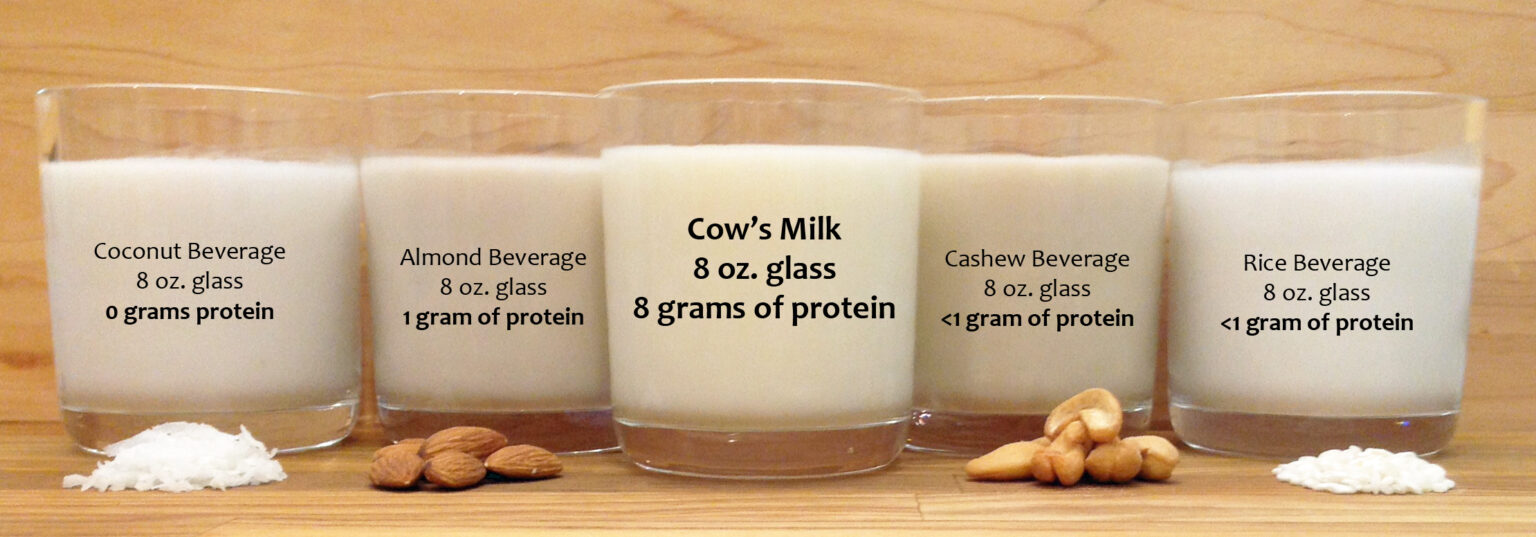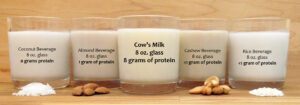By Amy Myrdal Miller, MS, RDN
Disclosure Statement: Amy is a National Dairy Council Ambassador. While she was not explicitly paid to write this blog, she receives an annual honorarium from the National Dairy Council to promote the nutrition, health, and culinary benefits of dairy products, including fluid milk, yogurt, and cheese.
Protein. It’s the white hot nutrient right now. Whole grains and omega-3s must be jealous. Packaged Foods Facts recently reported protein is the hottest functional food ingredient. And U.S. consumers can’t seem to get enough of products with high protein claims. According to Mintel, high protein claims are three times higher in the U.S. than in other developed countries.
It’s not just consumers and product developers who are in love with protein. I’ve attended a number of nutrition conferences the past few months where dietary protein has been a major focus of the scientific sessions.
Researchers looking at recommended versus optimal protein intake for weight management, performance, and healthy aging all agree that optimal protein intakes may be twice as high as the current RDA for protein (0.8 g/kg of body weight).
If you base your daily protein requirements on the RDA, a 100 kilogram (220 pound) man needs 80 grams per day while a 70 kilogram (154 pound) woman needs 56 grams. Doubling these amounts to the optimal range results in 160 grams per day for the man and 112 grams for the woman.
In addition to looking at optimal protein intake, nutrition researchers are also examining the effects of the timing of protein intake. Research is suggesting that consuming approximately equal amounts of protein at breakfast, lunch, and dinner may be the optimal dietary pattern for promoting muscle protein synthesis (a nerdy way of saying “healthy muscles”).
So, let’s say you’re a 154 pound woman who is striving for the optimal protein intake of 112 grams per day. This means you’ll need to consume about 37 grams of protein at each meal. While there are many protein-rich foods and beverages in your local grocery store, cow’s milk is often overlooked as a protein-rich beverage. An 8-ounce glass of milk provides at least 8 grams of protein (some brands contain a bit more) compared to 1 gram or less in almond, cashew, coconut, or rice beverages.
Consuming 37 grams of protein at lunch and dinner is a bit easier than meeting that goal at breakfast, but here’s one example of how to meet your optimal protein needs at breakfast:
Eat a whole wheat English muffin (5 grams of protein) with an egg (6 grams of protein) and a 2 oz. slice of Cheddar cheese (14 grams of protein) paired with a 12 oz. glass of milk (12 grams of protein). You’re at 37 grams. Grab an orange so you get some fruit, and your day is off to a great start in terms of balance and protein! (For the calorie counters out there, this breakfast contains 635 calories, or about one-third of the daily calorie needs for a moderately active woman.)
Adding a glass of milk to every meal can help you meet your optimal daily and meal protein requirements. But don’t limit yourself to just drinking milk. Cook with it and increase the protein content of foods like oatmeal, soups, polenta, and mashed potatoes. Mashed potatoes made with diced potatoes slowly cooked in milk until soft are so creamy and luscious. You can also go old school and make some rice pudding for dessert. I like mine with maple syrup and a little lemon zest and cardamom, a nod to my family’s Icelandic heritage.


